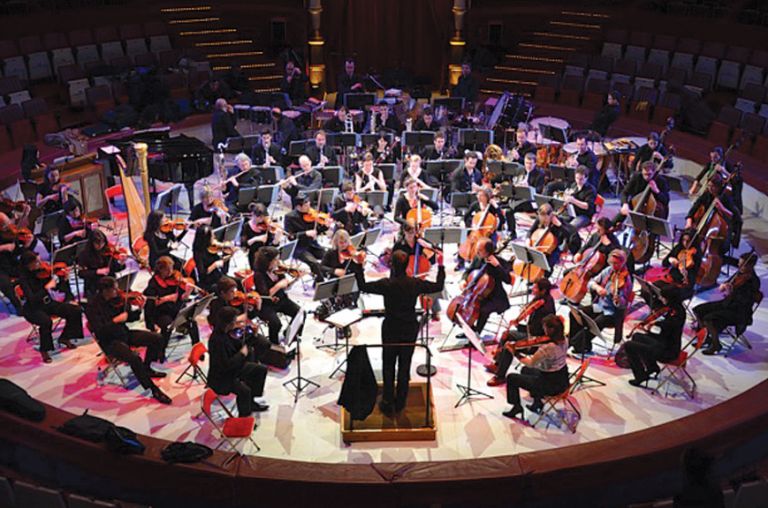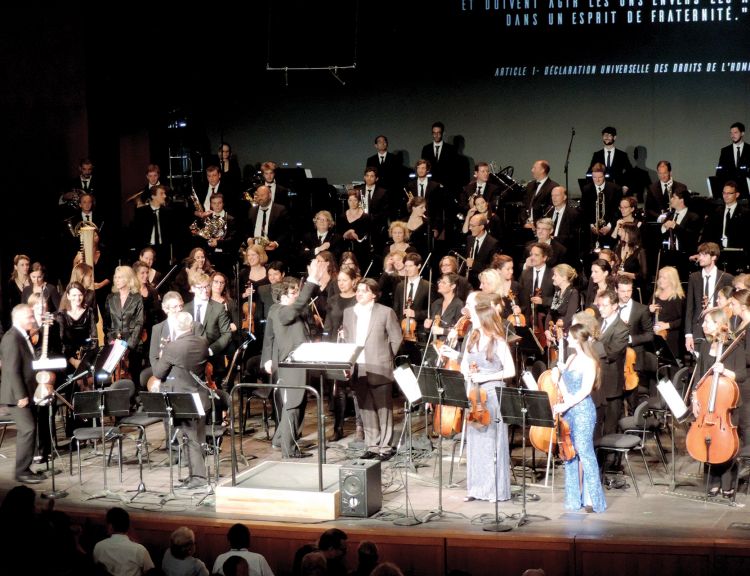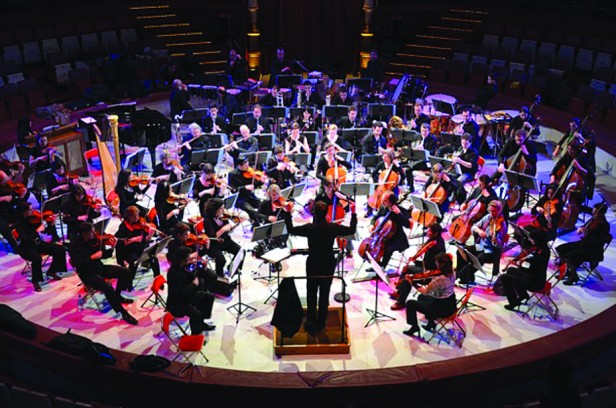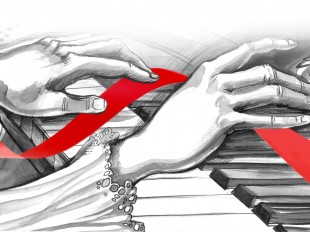Within the symbolic name Of Silk and Fire lay the longstanding aim of the festival’s three organisers, the Heydar Aliyev Foundation, the Embassy of Azerbaijan in France and the composer Pierre Thilloy, who wanted to promote Azerbaijani musical culture in the form of a classical and contemporary music festival. The project sought to reveal the beauty of Azerbaijani music and uncover its unique world of sounds generated by the fusion of so many different elements, whilst at the same time emphasising the brilliance of the musicians and the composers and showing the variety of interpretations in performing the music.
Without doubt the Heydar Aliyev Foundation, already a great contributor to the cultural promotion of Azerbaijan, was a great support and inspiration in terms of ideas and organisation, but the Azerbaijani embassy in France also played a significant role in coordinating events.
Voyages Fantastiques
The Voyages Fantastiques festival will stretch over nearly a year, from September 2015 to June 2016 and features a multi-genre programme. The underlying principle of all the concert programmes is to alternate masterpieces of global classical music with Azerbaijani classical music, composed by the founders of the Azerbaijani classical movement, members of the Uzeyir Hajibeyli school – Qara Qarayev, Fikret Amirov, Musa Mirzoyev, Elmira Nazirova (a pupil of the Haji Khanmammadov school) and the symphony composer Khayyam Mirzazade. A special emphasis will be given to jazz interpretations of global classical music and a particular piano tribute concert to the great Azerbaijani jazzman Vagif Mustafazade has also been included.
Pierre Thilloy, an experienced composer of the European school, arrived at the idea after studying Azerbaijani musical masterpieces for a long time and visiting the country. Thilloy is not new to promoting Azerbaijani music and culture - he’s been involved with numerous events in Baku and various French cities. His most significant project was the Syam Festival in 2014. By then a traditional programme had already developed which encompassed all the styles and genres of Azerbaijani folk and professional music, from mugham to the music of professional composers.
Silk & Fire
The first ten days of the festival were wholly dedicated to Azerbaijani music and took place in September, when a programme of five concerts came together as a mini-festival under the more elaborate name, Of Silk and Fire. A concert by the young chamber ensemble of the Uzeyir Hajibeyli Baku Music Academy, conducted by Fuad Ibrahimov, followed the upbeat opening on 13 September in the Théâtre des Champs Elysées.
Then Azerbaijani traditional music came to the Temple Saint Etienne and other locations in the city of Mulhouse (in the Alsace region of France) on 17 September. Led by the tarist and honoured Azerbaijani artist Sahib Pashazade, the ensemble of folk instruments performed traditional mughams. The following day featured Azerbaijani folk songs and traditional tasnifs (ballads – Ed.) performed by the ensemble of traditional instruments led by Munis Sharifov.
The first, season-opening mini-festival concluded with an interesting ethno-jazz programme featuring the international quintet of pianist Elchin Shirinov on 19 September. His usual trio, augmented by tarist Ayaz Shirinov and balaban player Mehman Nuriyev for the Jazz en Azerbaïdjan concert, has performed successfully for several years on the jazz stages of Europe and America and this time the Alsace audience was treated to Azerbaijani song-jazz elements in the group’s jazz interpretation.
Orchestre Lamoureux
The backbone of the festival programme was the Orchestre Lamoureux, which is quite well known in Europe and beyond and was founded by the cellist and conductor Charles Lamoureux (1834-1899). The group is famous for its extensive list of conductors, which includes names like Paul Paray, Igor Markevitch, Jean Martinon, Yutaka Sado and Fayçal Karoui. Participating in numerous festivals, the orchestra is an active promoter of the music of French composers from different generations. Over its one and a half centuries of existence it has given many concerts, mainly in its native France and neighbouring countries, and the music of Russian, Austrian, Czech and other composers also falls within the orchestra’s interests.
The Orchestre Lamoureux is currently conducted by Pierre Thilloy, who is continuing the traditions established by Charles Lamoureux, whilst also trying his utmost to adapt the orchestra to the contemporary world.
Music should strive to direct the listener towards classical and contemporary music in equal measure, is how the current conductor sees the job of the Orchestre Lamoureux.
Colourful Azerbaijani fusion
In general, the festival’s organisers saw Azerbaijan as a bright, contrasting and figurative fusion. Azerbaijan is the land of silk and fire, it’s a country where people worship and respect fire, read the introduction to the general programme. The main emphasis was on the country’s diverse history and cultural traditions and its association with ancient ways of life. This was undoubtedly reflected in the festival programme, which was multi-genre and gave the impression that all the colours of Azerbaijani music - from classical concerts to mugham and jazz - were represented in symphony.
Striving to connect with the audience, to prepare it for the originality of the music and to encourage dialogue, the organisers decided to hold small informal talks with audiences, which were planned for almost all of the festival’s concerts. There were also a series of booklets with extensive information about Azerbaijan, its history and past, musical culture and the performance programme.
One couldn’t fail to admire the thorough and representative nature of the programme, which certainly fulfilled the original aims of the organisers: to show as much as possible the brilliant, signature pieces of Azerbaijani music, as well as the mastery of talented young conductor Ayyub Guliyev. Each of the masterpieces by Azerbaijani composers possessed a special power and a range of sounds that the musicians were able to express in their own particular way.
Koroghlu to Symphony No.10
Beginning with the musical symbol of the heroic ashug epic - the festive chords of the overture to Hajibeyli’s opera Koroghlu - the orchestra thereby created the right atmosphere to take in the wealth of images and sounds to come at the festival’s opening concert on 13th. Then the symphony extravaganza The Sorcerer’s Apprentice by the French composer and orchestral master Paul Dukas, written after Johann Wolfgang von Goethe’s ballad of the same name, transported listeners into the fantastical fairytale world created by the author’s brilliance. The Waltz from Qara Qarayev’s ballet Seven Beauties was then a grand move into the enchanting world of the eastern romantic ballet.
Three concertos chosen as the main compositions of the evening were completely different in terms of composition and style. The Haji Khanmammadov kamancha concerto was uniquely expressive, a deeply touching and mournful ode to his people. The mournful theme, which pervaded the concerto in the performance of Honoured Artist Elshan Mansurov, captivated the listener with equal power every time. The Vagif Mustafazadeh concerto also unexpectedly delighted the audience, as the two contrasting themes were heard in the beautiful, spiritual performance by pianist Emil Afrasiyab, deeply soulful but without excessive emotional force. The epic transgressions into the Šur mode in the orchestral part were colourfully performed by the Orchestre Lamoureux, and generally speaking the concerto will be remembered as a bright tapestry of rhythmical colours.
The Arabian-themed concerto by Fikret Amirov, already much loved by the European public, was received with great enthusiasm. Honoured Artist and pianist Murad Huseynov shone, delivering such an original composition with a special emotional kick – fusing the East into a contrasting juxtaposition of the bright melodies and rhythmic dansante theme and then came the broad Andante with striking power and the exuberant, harmonious finale.
And finally, the piece performed just before the curtain came down was Pierre Thilloy’s Symphony No.10, called Exil; a grand and festive end. Thilloy presented the composition, dedicated to his friends, in a meditative three-part cycle, in which he also included the Azerbaijani national instruments tar and kamancha.
The slow and varied unraveling of the cycle, the expressive performances of the tar, the visual colours and electronic sounds of the accompanying stage added a sense of emotional tragedy and gave the cycle a certain theatrical quality. In the middle section, the Adaggio, the audience could hear the transition to some kind of mythical beginning, which was accompanied by the violin, and the highly evocative performance of our talented compatriot Sabina Rakcheyeva, which transported the listener to a world of memories about what was and what has now gone, and for some – to a past tragically lived.
The Voyages Fantastiques festival is undoubtedly a wonderful event for promoting our culture, and the fact that the repertoire of the unique Orchestre Lamoureux features the music of various Azerbaijani composers is a great pleasure. There are still plenty of concerts and other cultural events planned for the festival, which runs until June 2016. Lovers of the arts can expect an entertaining journey into the world of Azerbaijani music as interpreted by many talented performers.
About the author: Turan Mammadaliyeva (PhD Arts) is a musicologist who specialises in mugham and jazz. She is the author of a study entitled Jazz Harmony in the Works of Azerbaijani Composers.






